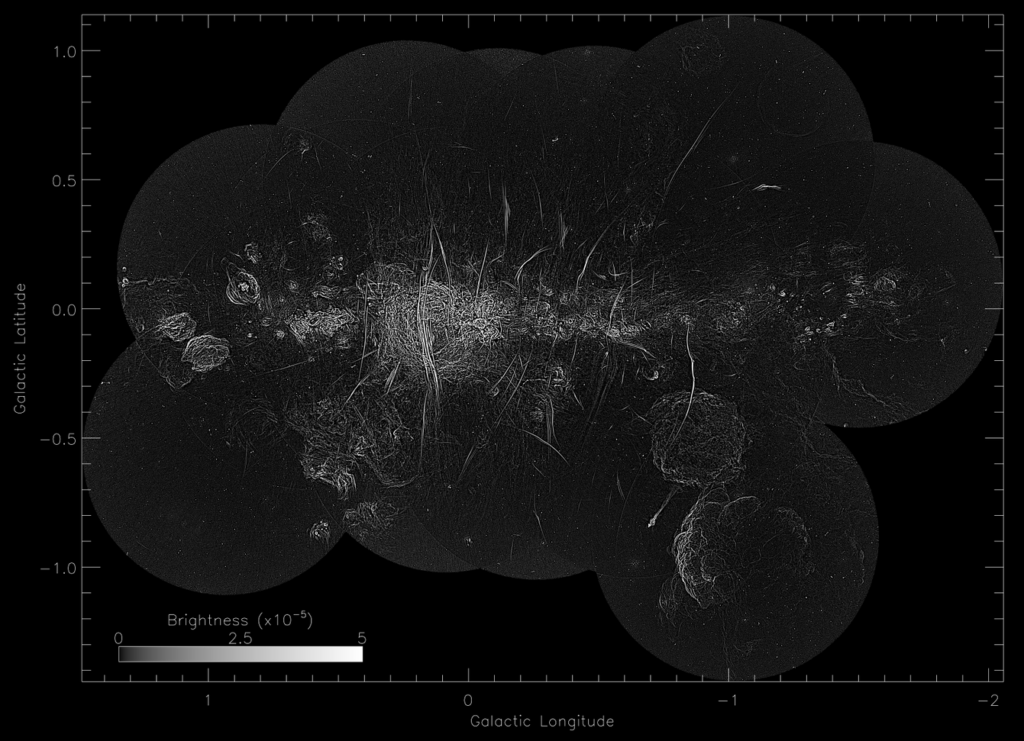
A recurring theme in astronomy is that each new telescope discovers new things we can’t understand. A lot of the current excitement about the JWST is because it will, if everything works, be a massive technological leap forward, and we know it is going to reveal things we haven’t been creative enough to imagine.
While the JWST’s technological leap is something like jumping from the electric cars of the late 1800s to a Tesla Model S, other areas of astronomy have taken a more iterative approach. In radio astronomy, engineers and scientists are working their way toward the next generation Square Kilometer Array – or SKA – by building and testing a series of smaller facilities that test all the needed technologies. One of these testbed facilities is MeerKAT in South Africa, and the data from this facility is showing stunning structures that we totally don’t understand, and mysteries like this are amazing.
In the early 80s, Farhad Yusef-Zadeh discovered radio bright filaments in the inner galaxy. These filaments mark the locations of magnetic field lines and glow from light emitted by high-energy electrons gyrating in the field. While early studies allowed the brightest filaments to be discovered, it took twenty observing sessions over three years with MeerKAT to show us just how many of these filaments are out there and how much we have to learn about them.
As Yusef-Zadeh puts it: We still don’t know why they come in clusters or understand how they separate, and we don’t know how these regular spacings happen. Every time we answer one question, multiple other questions arise. … We’re hoping to get to the bottom of it, but more observations and theoretical analyses are needed. A full understanding of complex objects takes time.
This data has allowed a few things to be understood: The strands stretch up to 150 light-years and can accelerate electrons to relativistic speeds. They seem to be associated with our galaxy’s central supermassive black hole.
I can’t wait to see what SKA allows us to see with this project when it starts making observations in 2024.
More Information
Northwestern press release
“Statistical Properties of the Population of the Galactic Center Filaments: The Spectral Index and Equipartition Magnetic Field,” F. Yusef-Zadeh et al., to be published in The Astrophysical Journal Letters (preprint on arxiv.org)




 Join the Crew!
Join the Crew!
 Escape Velocity Space News
Escape Velocity Space News
0 Comments